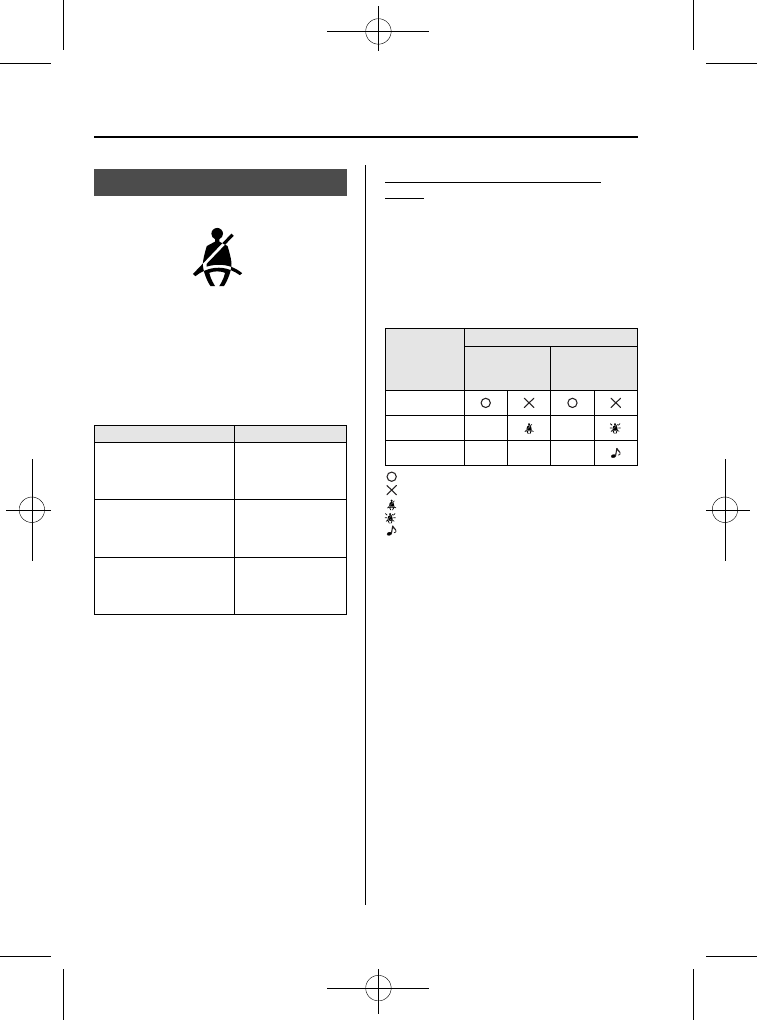Mazda CX-7 (2012 year). Manual - part 3

Black plate (40,1)
Seat Belt Warning Light/Beep
The seat belt warning light illuminates
and a beep sound will be heard if the
driver's seat belt is not fastened when the
ignition is switched ON.
Conditions of operation
Condition
Result
The driver's seat belt is not
fastened when the ignition is
switched ON.
The warning light
flashes and a beep
sound will be heard
for about 6 seconds.
The driver's seat belt is
fastened while the warning
light and the beep sound are
activated.
The warning light
turns off and the beep
sound stops.
The driver's seat belt is
fastened before the ignition
is switched ON.
The warning light will
not illuminate and the
beep sound will not be
heard.
qBelt Reminder
NOTE
Consult an Authorized Mazda Dealer to
deactivate or restore the belt reminder. Though
the belt reminder can be deactivated, doing so
will defeat the purpose of the system to warn
the driver and the front passenger in the event
that their seat belts are not fastened. For the
safety of the driver and front passenger, Mazda
recommends not deactivating the belt
reminder.
Driver seated/Front passenger not
seated
The belt reminder is a supplemental
warning to the seat belt warning function.
If the driver's seat belt is not fastened
when the ignition is switched ON, the
warning light/beep operates to give you
further reminders according to the chart
below.
Condition
Vehicle speed
Between 0
― 20
km/h
(0
― 12 mph)
20 km/h
(12 mph) or
more
Seat belt
Indicator
Beep
: Fastened
: Unfastened
: Illuminated
: Flashing
: Beep
Once the beep sound is heard, it continues
sounding even if the vehicle speed lowers
to 20 km/h (12 mph) or less until the
seatbelt is fastened or the beep sound
period has passed.
2-28
Seat Belt Systems
CX-7_8CG3-EA-11J_Edition1 Page40
Saturday, September 24 2011 10:31 AM